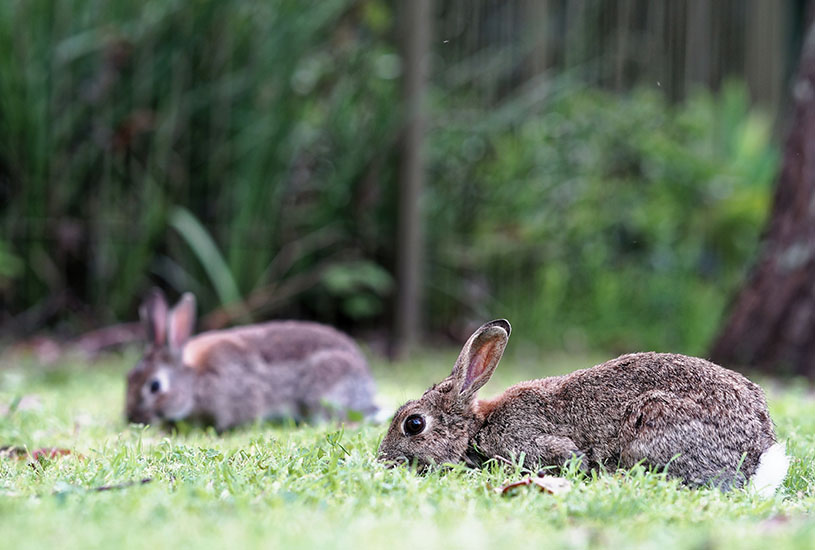Ridding Australia’s landscape of rabbits could have mixed results for our native species, says a recent study.
The removal of rabbits could be good or bad for Australia’s native species depending on how many rabbits are removed and for how long, according to research from Deakin University’s Centre for Integrative Ecology (CIE).
The study, published recently in the ‘Journal of Applied Ecology’, found that, while introduced rabbits are negatively impacting native species through competition for food and shelter, and supporting larger cat and fox populations, if lots of rabbits are removed quickly, numbers of small native mammals could decline in the short-term.
Deakin Associate Professor of Wildlife Ecology Euan Ritchie, and colleagues from the University of Adelaide and the French National Centre for Scientific Research (CNRS), used simulation models to evaluate the effects on a mammal food web of reducing rabbit populations to varying degrees.
The modelling allowed researchers to examine how changes in rabbit numbers would impact a typical mammal community from arid Australia, including their effect on cats, foxes, dingoes, kangaroos and small native mammals.
Researchers found the removal of rabbits could benefit native biodiversity immediately at removal rates between 30 and 40 per cent. Yet if increased beyond these levels, numbers of small native mammals would initially decline.
“The results we found provide insight into potential consequences for mammal communities resulting from rabbit control, especially where rabbit population control is substantial,” Associate Professor Ritchie said.
[testimonial_text]It shows the importance of considering and accounting for multiple species, and their interactions, as part of pest control and wildlife management.[/testimonial_text]
[testimonial_picture name=”Euan Ritchie” details=”Associate Professor of Wildlife Ecology”]
 [/testimonial_picture]
[/testimonial_picture]Importantly, researchers found that native mammal abundance recovered and increased after a time delay, with small mammals benefitting from sustained rabbit control.
Associate Professor Ritchie said higher rates of rabbit control could initially reduce native mammal numbers for two reasons.
“Kangaroo numbers increase over the rabbit control period and they then may compete with smaller native mammals for food, but through grazing may also reduce vegetation cover, potentially exposing small mammals to increased predation risk,” he said.
“There is also an increase of predation by cats over the rabbit control period, as they are presumably forced to switch from predominantly hunting rabbits to increasingly hunting small native mammals. Interestingly, the higher predation by cats had an important influence during high rates of rabbit removal.”
Associate Professor Ritchie said the research would help provide pest and wildlife managers with important information that could be used to predict the effects of species removal and control on ecological communities, and plan accordingly.
“The conservation of native biodiversity in Australia’s arid and semi-arid areas – which include desert and Mallee regions – will likely benefit from controlling invasive prey like rabbits, as well as introduced predators such as foxes and feral cats, as each play significant roles in affecting ecosystems,” he said.
The paper, ‘Eradicating abundant invasive prey could cause unexpected and varied biodiversity outcomes; modelling multi species interactions for wildlife management’ was co-authored by Miguel Lurgi at the CNRS Experimental and Theoretical Ecology Station (France) and Dr Damien Fordham at the University of Adelaide.
Published by Deakin Research on 9 August 2018



